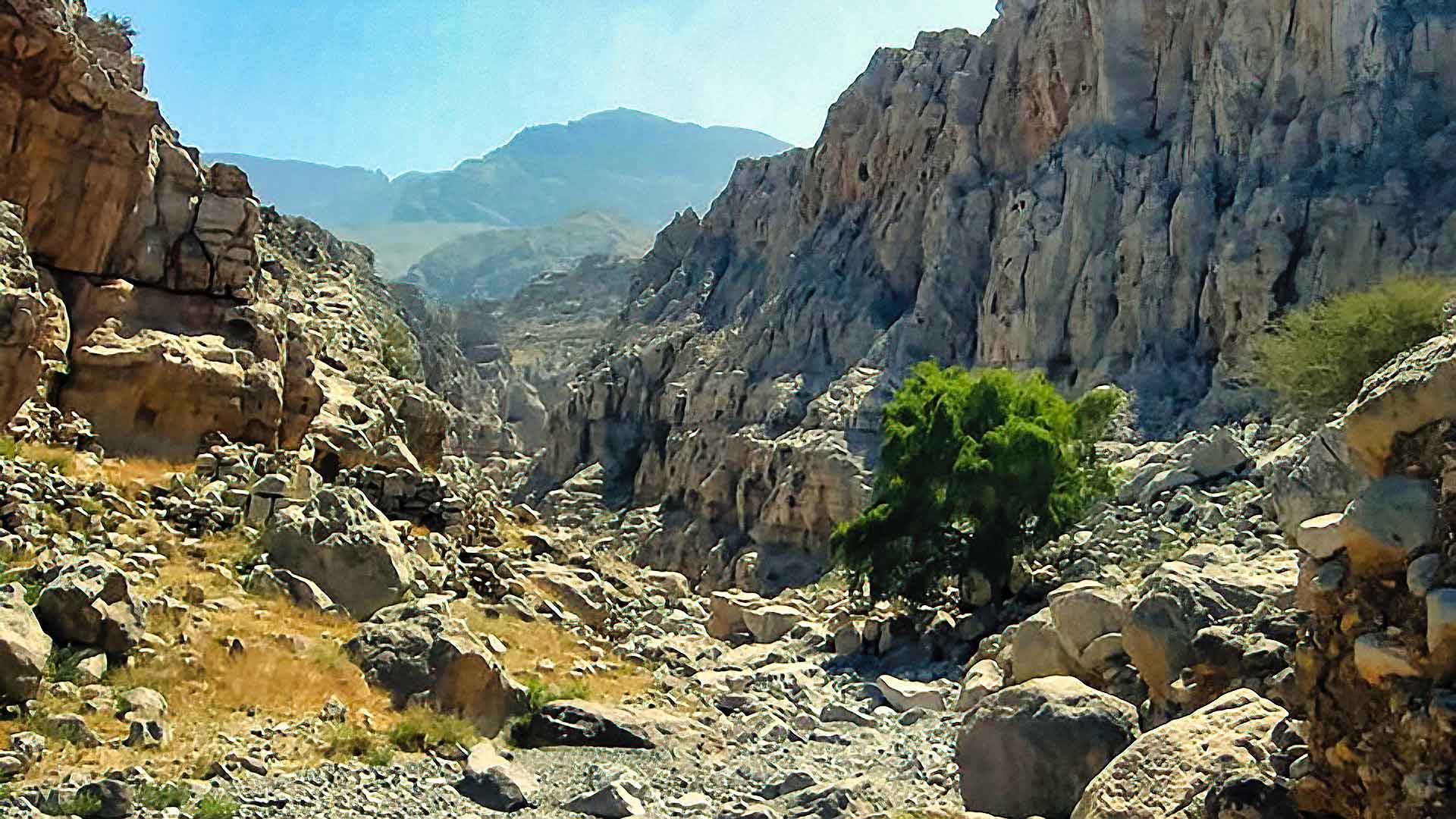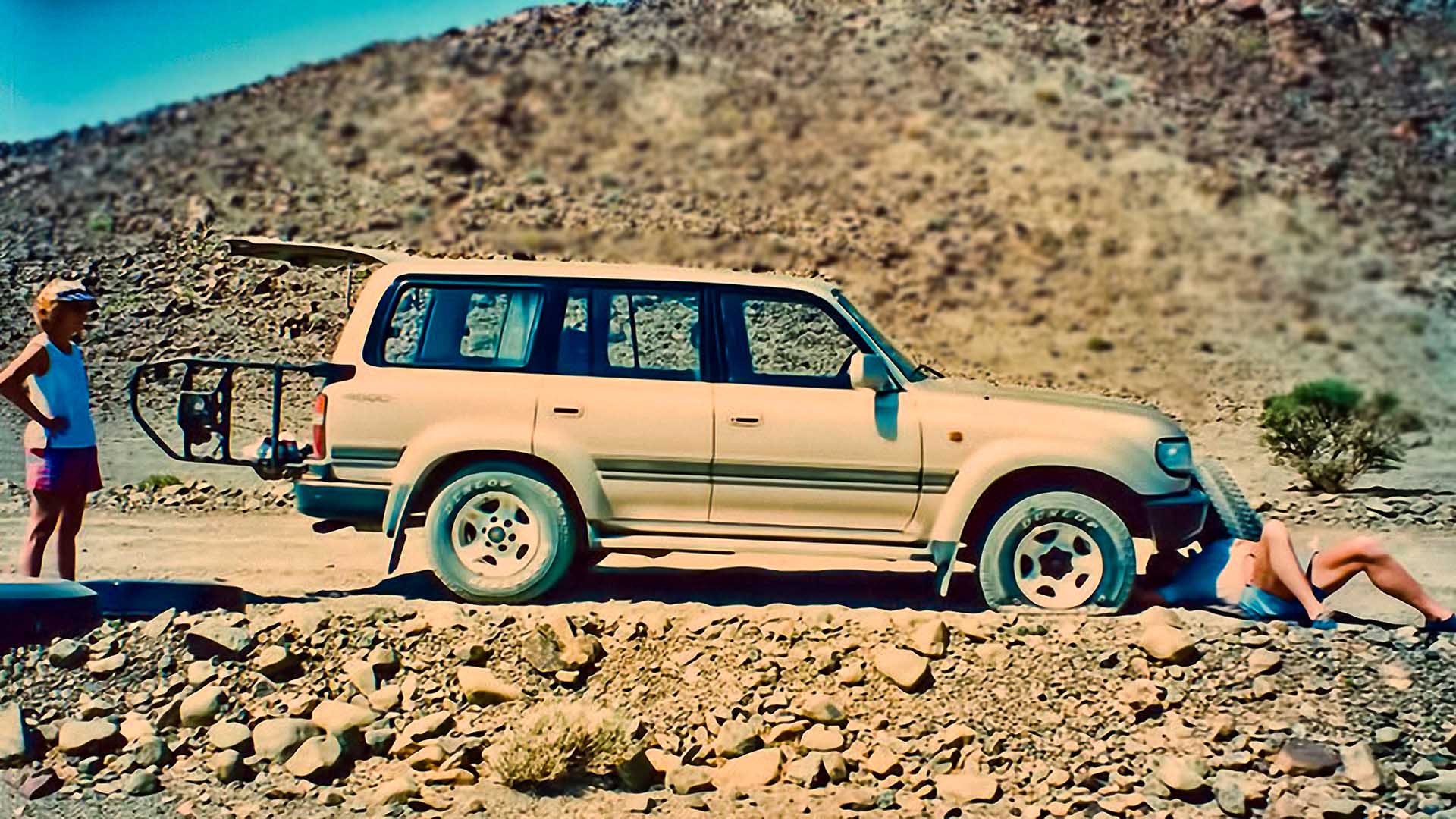
Wadi is the Arabic term traditionally referring to a valley.
In some cases, it may refer to a dry riverbed that contains water only during times of heavy rain or simply an intermittent stream.
Wadi Rams in Ras Al Khaimah

Image by Pattar
A "WADI" is a Dry Stream or River Bed that usually fills with water during the rainy season.
Wadis are found in the Hajjar Mountains and surrounding areas in an hour's drive from Dubai.
Driving 4WDs along these Wadis became a Friday "outing" for both Expatriate and Local Families.
It was fun - and potentially dangerous too!
Flash floods could entrap the unwary and prove lethal for those who chose to ignore danger signs!
Dark clouds in the sky meant rain was on its way and it was time to leave the Wadi - quickly!

Driving in a Wadi had its problems
Why is it called "Wadi Bashing" ?
Wadis contain sharp rocks, boulders and dust.
Dry during the summer season.
Dangerous in the Winter
Sudden storms can fill the Wadi with water in minutes up to 7 metres deep.Wadi driving required concentration and care.
There was the ever present risk of vehicle damage or tyre puncture
Becoming stranded was a distinct possibilityOften the joy of Wadi Bashing was tempered by the cost of repairing the 4WD the following day
No Mobile Phones back then!!
Getting to explore Dubai's hinterland in the 1970s was difficult.
There were few roads, no easily obtainable reliable maps or 4WD vehicles.
Explorations were limited by time available. Fridays was the only official day off so trips were usually limited to what could be done in a day.
Venturing into Dubai's hinterland in involved an element of risk. Breaking down in a remote Wadi could be serious - no mobile phones then. Chances are you would see no one as you edged your way along these wadis and tracks.
There were villages which, in 1970s were still inhabited by local Bedouin Arabs living in barasti homes. Later they relocated to purpose built "villages" provided by the Federal Government and villages became abandoned.
Border Posts Guards wanted to inspect you and your vehicle before letting you proceed - all done with good humour and a good deal of curiosity.
Overtime more 4WD vehicles became available - particularly Japanese imports. Their comfort and capabilities enabled more people to get off-road to more places more easily.
Slowly exploring Wadis changed to seeking secluded places where a group of friends and family could relax and enjoy themselves.
New roads opened up Dubai's hinterland making places easily accessible by car previously reached only by 4WD.
By 1990s Wadi Bashing was something many people did, often in groups.
Road traffic signs began to appear in the Wadis. Mobile phones became the norm
Wadi Bashing was no longer the adventure it had been in 1970s
4WDs were hard to come by in 70s Dubai.
Japanese 4WDs had yet to flood into the Dubai market. LandRovers were favoured. Finding one to buy was difficult. New LandRovers were expensive and in short supply. Most were already destined for Construction Companies, the Government or influential Dubaians. Secondhand LandRovers had invariably experienced a hard life and not worth buying.
My "bright" idea was to buy Landrover in UK while on leave. Scanning "The London Evening Standard" identified a short wheel base Landrover for sale at a farm near my home. A telephone call later and I was inspecting this LR. It was in good condition apart from left side damage where the Farmer's wife had collided with their farm gate. A price was agreed. I was to call back next day to collect the LR.
When I did, the Farmer was embarrassed. His wife had collided with the farm gate again, damaging the LR's right side. Price was further reduced to 700 pounds. So I set off with the LandRover and found a LandRover Workshop who agreed to swap the damaged body panels for new plus a small cash adjustment. Unbolting the old and bolting on the new body panels took less than an hour. Next was making shipping arrangements to Dubai.
Back then Dubai had no restrictions on importing RH Drive vehicles or driving them on Dubai's roads. After a few weeks wait my "new" LandRover arrived in Port Rashid, Dubai. It was quickly cleared through Customs, registered and insured.
Now we could go Wadi Bashing!
Len Chapman